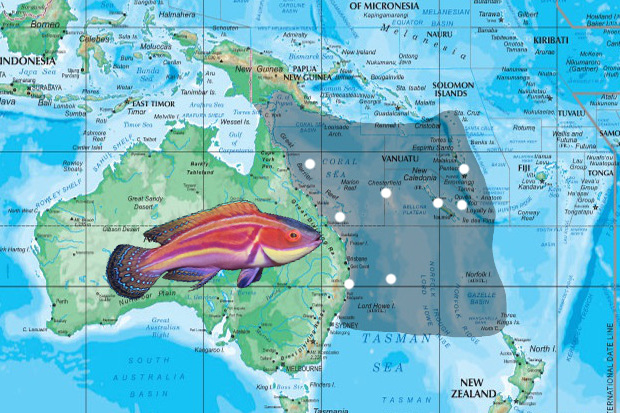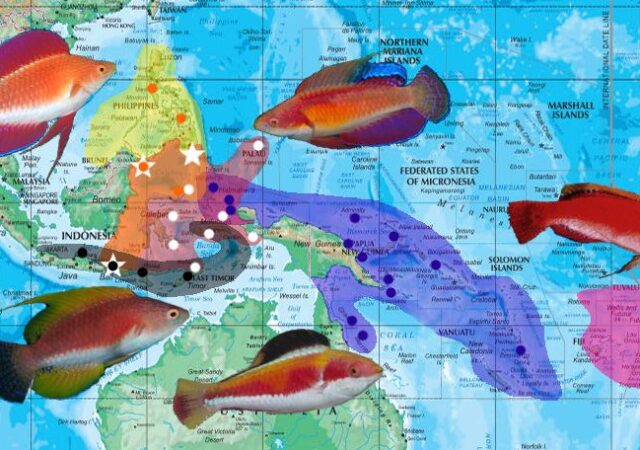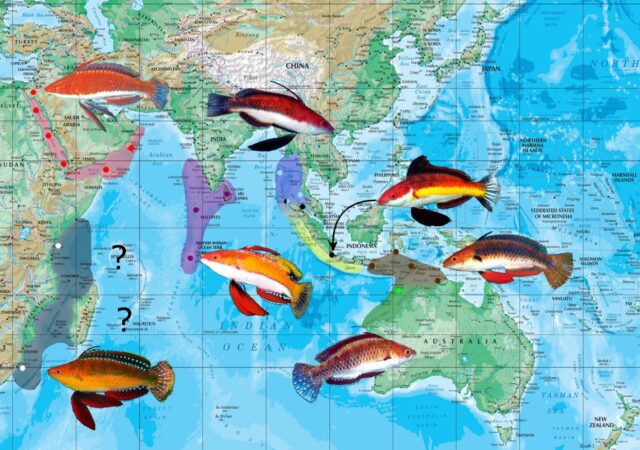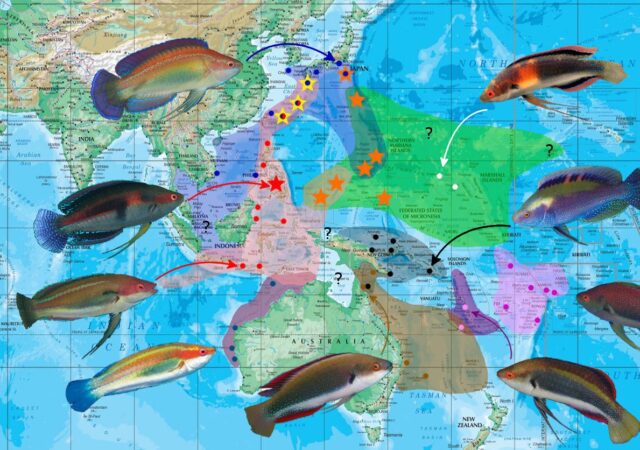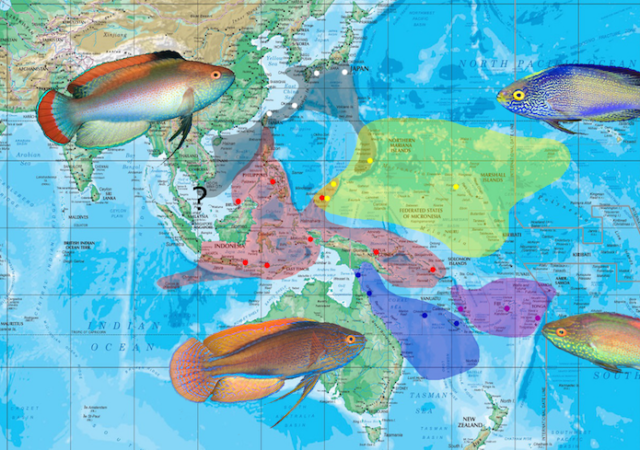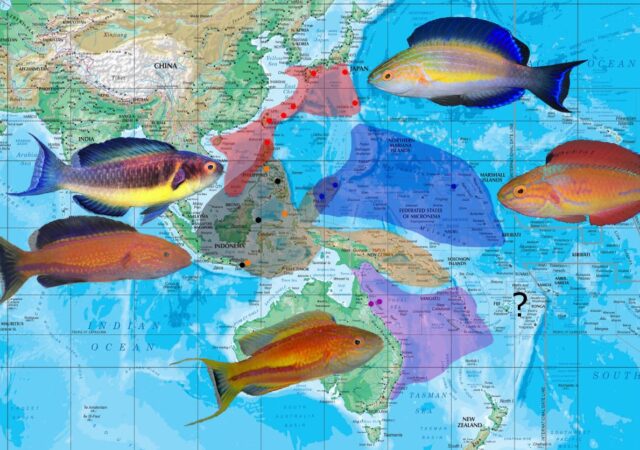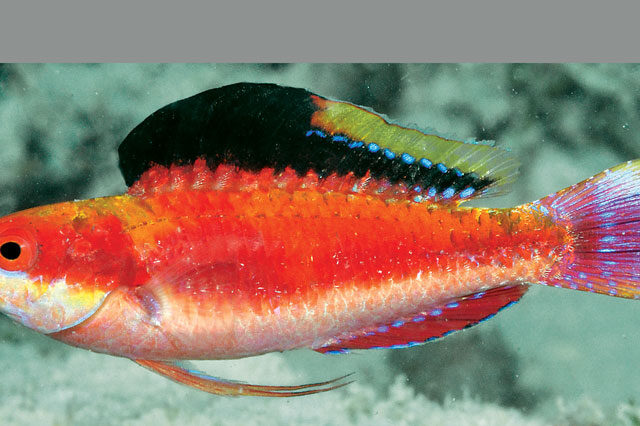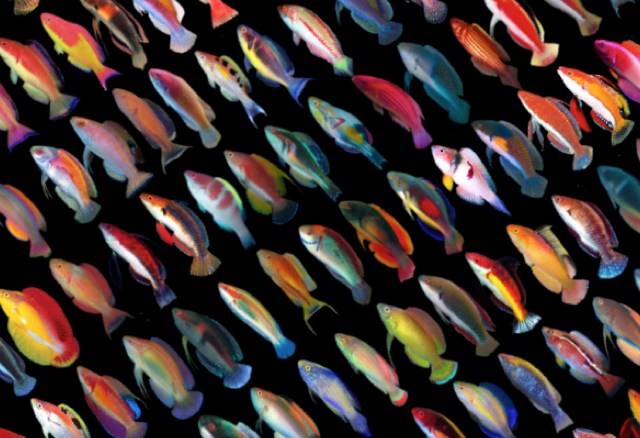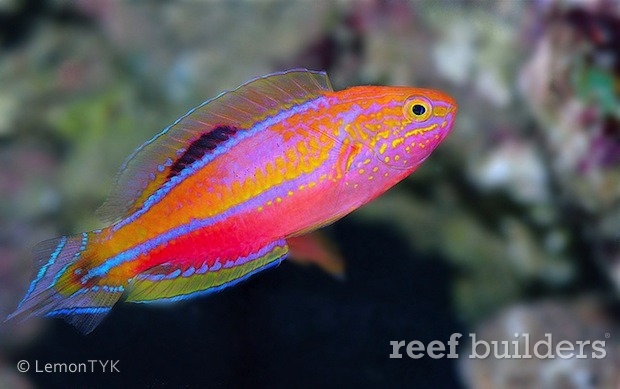At last, we’ve reached the thrilling conclusion to this comprehensive review of Fairy Wrasse evolution, and it’s time to once more dwell upon the topic of the group’s origins. As we’ve previously discussed, this enormously diverse genus can be comfortably categorized…
3.4 Fairy Wrasses: The filamentosus group
The filamentosus group presents the reader with a collection of familiar, aquarium-friendly species, many of which are exuberantly colored and morphologically quirky. Despite some superficial differences in colors and fin shapes, the overall morphology strongly implies that this is the…
3.3 Fairy Wrasses: The rubriventralis group
The rubriventralis group features some of the most beloved and charming species of fairy wrasses, ornately adorned with painterly brilliance and morphological exuberance. Unlike some of the characteristically larger members of Cirrhilabrus, the rubriventralis group members remain small, rarely exceeding…
3.2 Fairy Wrasses: The temminckii group
The temminckii group plays host to some of the genus’ larger and more unappealing species. Burley, pugnacious and often glazed in matte grey, these un-fairy looking fairy wrasses are more often than not associated with the ugly duckling sobriquet. Despite…
3.1 Fairy Wrasses: The rubrimarginatus group
The rubrimarginatus group is home to some of the most well-known (and well-loved) of the Fairy Wrasses. The group can be divided rather equally into two clades, each with their own separate diagnostic features. The males attain fairly large sizes,…
2.2 Fairy Wrasses: The cyanopleura group
The cyanopleura group is the next collection of fairy wrasses from the second major Cirrhilabrus clade (whose member taxa share the trait of mid-length pelvic fins) and is sister to the scottorum group. In the latter, certain traits that were diagnostic to the members will be…
1.2 Fairy Wrasses: The lunatus group
Cirrhilabrus johnsoni was first described in 1988 based on specimens collected in the Marshall and Caroline islands. This small species served as the twentieth member of a rapidly expanding genus, and was decidedly different with a crescent shaped caudal fin adorned…
Cirrhilabrus marinda, a cryptic new species of fairy wrasse similar to C. condei
Cirrhilabrus marinda is the newest species of fairy wrasse to be described, with the new fish being a very close offshoot of the common aquarium favorite, Cirrhilabrus condei. Marinda’s fairy wrasse looks very similar to Conde’s fairy wrasse with a nearly identical…
0.0 Fairy Wrasses: A review of the genus Cirrhilabrus
Fairy wrasses are some of the most ubiquitous fishes in the marine aquarium trade, which is why it may come as a surprise to learn that the group has never received a serious taxonomic review. The scientific literature is filled…
Pintail and Lunate fairy wrasses have breathtaking nuptial colors
Enough has been said and blogged about the lunate and pintail fairy wrasse – Cirrhilabrus cf lunatus & C. cf. lanceolatus already. Having made a meteoric appearance in 2013, we’re still enjoying the availability of these species that the Philippines has to offer.…


